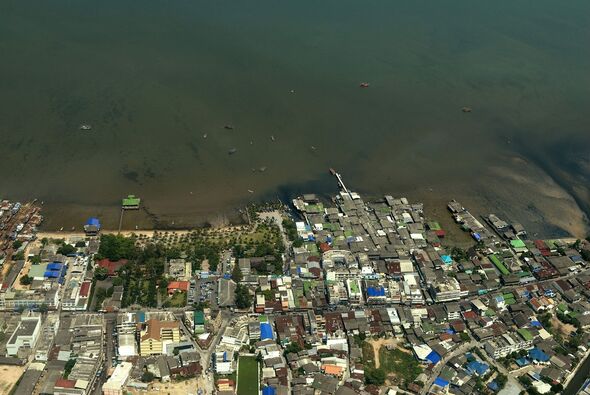In a move to reshape global maritime trade Thailand has unveiled plans for a $28 billion (£22bn) land bridge across its southern isthmus.
This ambitious project aims to connect the Gulf of Thailand with the Andaman Sea, offering a strategic shortcut that could rival the historic significance of the Suez Canal.
The Strait of Malacca – a narrow waterway between the Malay Peninsula and the Indonesian island of Sumatra – handles about 30% of global trade.
However its heavy traffic and susceptibility to piracy and congestion have prompted the search for alternative routes.
Thailand’s proposed land bridge seeks to address these challenges by creating a direct link between the country’s eastern and western coasts.
The project involves constructing two deep-sea ports – one in Chumphon province on the Gulf of Thailand and another in Ranong province on the Andaman Sea, connected by a 90-kilometer (56mile) network of highways, railways, and pipelines.
This infrastructure would enable the efficient transfer of goods across the isthmus, bypassing the congested Strait of Malacca.
Proponents of the land bridge highlight its potential to reduce shipping times and costs significantly.
By circumventing the Strait of Malacca, vessels could save several days in transit, leading to an estimated 15% reduction in transportation expenses.
This efficiency could make Thailand a pivotal hub in global supply chains, attracting substantial foreign investment and bolstering the nation’s economy.
Prime Minister Srettha Thavisin has been a vocal advocate for the project, emphasizing its transformative potential.
During the Thailand-China Investment Forum in Beijing, he said: “This will be a global mega-project, which will shorten the duration of goods transport via the channel of the Malacca Strait by six to nine days.”
He also extended an invitation to Chinese investors, expressing Thailand’s readiness to enhance the ease of doing business in the country.
However, the project is not without its critics. Some analysts question its economic viability, pointing out that the process of unloading cargo at one port, transporting it overland, and reloading it at the other port could offset the time savings and increase costs.
Environmental concerns have also been raised, with fears that the construction could disrupt local ecosystems and adversely affect tourism and fishing industries in southern Thailand.
The Thai government has set an ambitious timeline for the land bridge project.
Bidding for construction contracts is expected to commence in mid-2025, with the goal of beginning construction later that year and completing the project by 2030.
